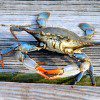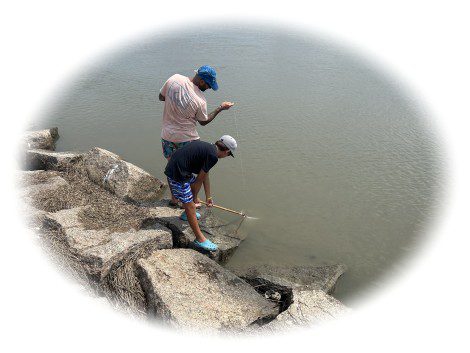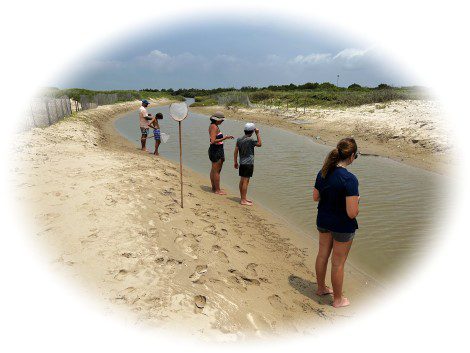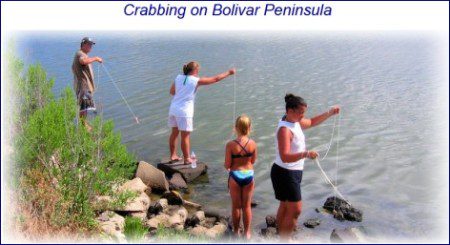 By Ed Snyder/Outdoors
By Ed Snyder/Outdoors
The line “twitched” slightly before coming taut against the tide. Fingering it found persistent pulls on the other end, “crab” I whispered to no one in particular while slowly pulling line in with one hand and grabbing my dip-net with the other. Within seconds a crabby hard-shelled critter with blue-tipped pincers busily mangling my chicken neck appeared, and with one quick swoop of the net the menu for this evening’s meal upgraded from boiled hotdogs to boiled blue-claws.
Its fun, it’s cheap, and it provides a great family style meal for seafood lovers. Crabs, mainly blue claw crabs (named for their aquatic blue colored pincers) are now being enjoyed throughout the Texas Gulf Coast areas. Summer is always the right time for crabbing, which is the one sport where expensive fishing gear isn’t needed. A spool of twine, chicken necks, a dip-net, and a cooler is all it takes to get you started.
Although certain types of crab-traps are legal to use they lack the adventurous excitement of the sportier “one-on-one” string and bait technique. If you have a passel of kids and need some sort of baby sitter controls in order to enjoy your outing, then the string and bait method is for you. Just tie on a 12 to 16 foot piece of twine, to a stake, piling, or scrub in the area near the water you wish to crab, then tie a chicken neck on the other end and just toss out into the water (faster current waters may require weights to keep it on the bottom).

For maximum fun rig several lines, then just sit back and watch the fun as the kids “run-a-muck” checking lines to see if any crabs have attached themselves to the baits. If so, teach them to slowly pull the lines in -plus- how to submerge a long handle net in the water under the crab to swoop it up. There will be more misses than captures, but that’s half the fun. The crab must be at least 5 inches across from shell-tip to shell-tip before keeping. If the crab is shorter than 5 inches across, or if it has an orange, spongy mass underneath, release it as it is a female with eggs and is illegal to keep.

Best places for crabbing will be any saltwater pass, slough, roadside drainage ditch, or canal found along the coastal areas. Prime crabbing can be found in just about all of the Galveston Bay system from East Bay to West Bay, the Inland Waterway that runs along leeward side of the Bolivar Peninsula, and any jetty or rock groin. Crabbing is a family oriented sport that can provide both an exciting day of fun in the sun as well as an activity that the whole family can enjoy together.



 Posted in
Posted in 























